Fiber Optic Patch Cable Connector Types & Their Uses
- Feb 13th 2024

Fiber optic patch cables are vital to every optical network, establishing connections to servers, switches, storage devices, and other equipment and devices in data centers, telecommunications rooms, and other network spaces.
Patch cables terminate to various fiber connector types to maintain compatibility with equipment input/output (I/O) connectors and support multiple optical applications and environments. The most commonly used patch cable connectors today include FC, ST, SC, LC, MTRJ, and MPO connector types, as well as newer very small-form-factor (VSFF) CS, SN, and MDC connectors used in high-density, high-speed duplex data center environments.
It’s important to understand the different fiber optic patch cable connector types and their applications. Views our entire line of Fiber Optic Connectors/Adaptors.
FC Connectors
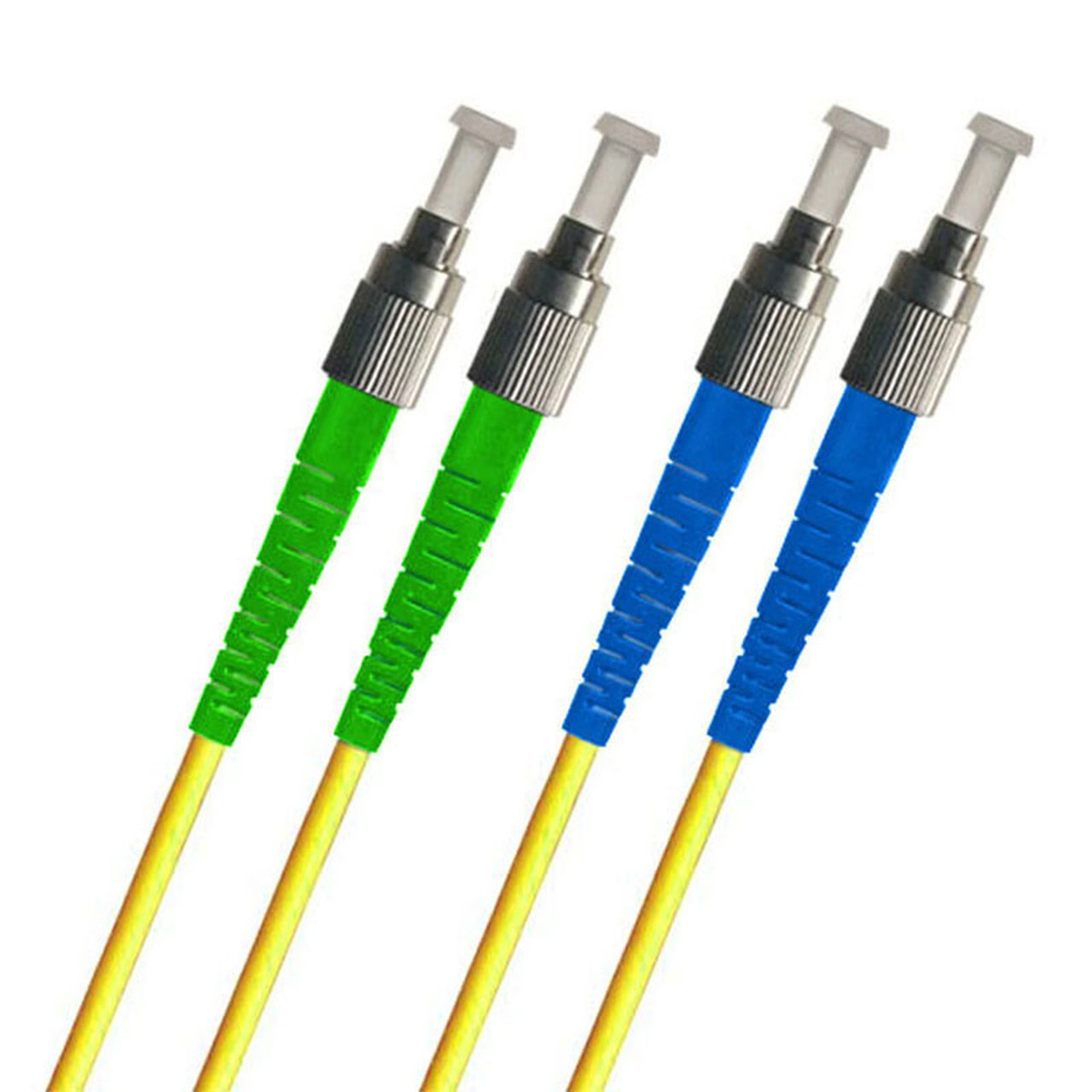
The FC, or fiber connector, was introduced in the mid-1980s. It was the first keyed physical contact connector to use a 2.5 mm ceramic or stainless steel ferrule that featured a round threaded body, which makes it ideal for high-vibration, broadcasting, and laboratory environments requiring a secure, reliable, and dust-proof connection.
The FC connector, however, can be difficult to remove in tight spaces and requires more time to form a connection due to its screw action. FC connectors support both multimode and single-mode fiber but have gone by the wayside in many fiber networks due to higher cost, bulkiness, and difficult installation.
ST Connectors
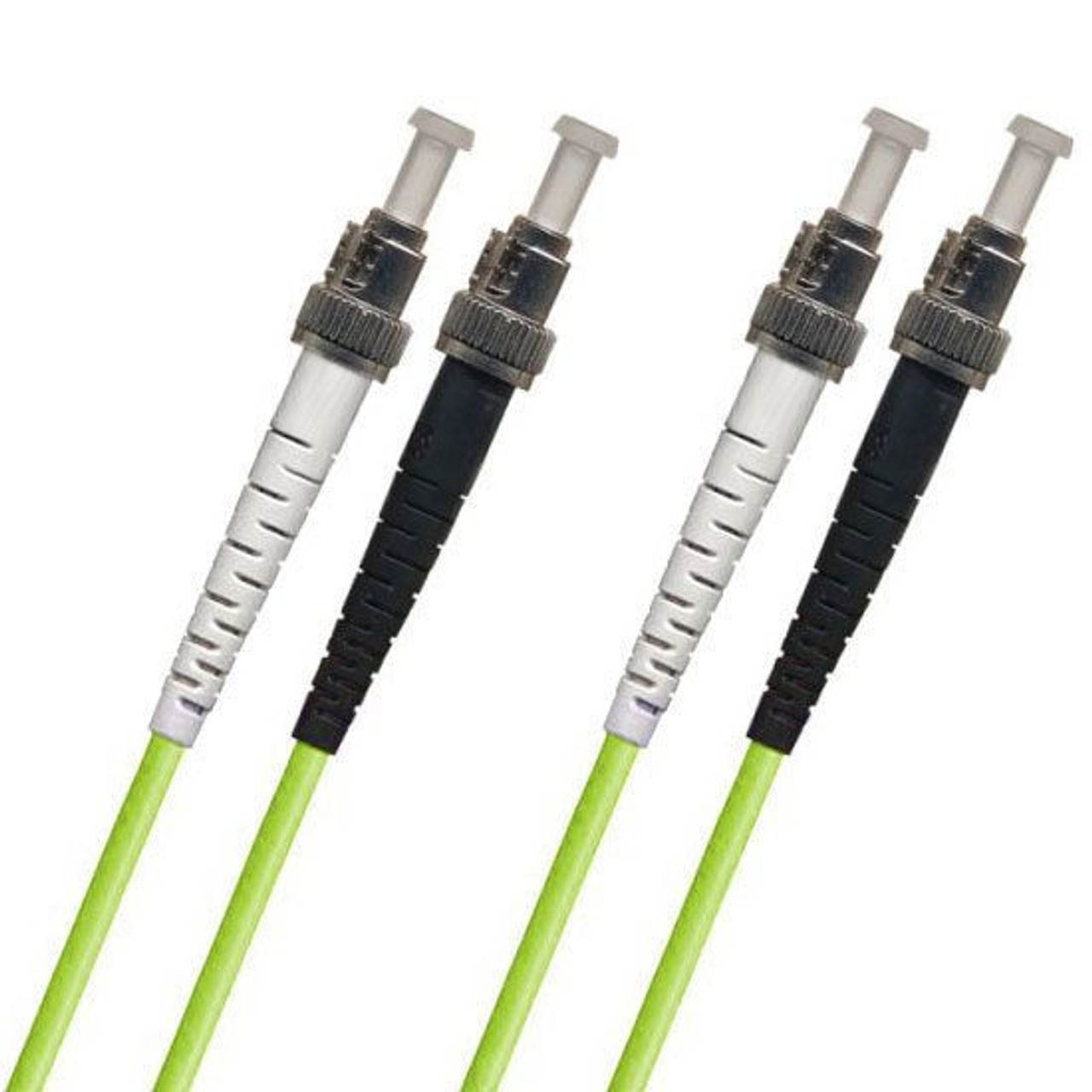
One of the oldest patch cable connector designs, the ST, or straight tip, connector was developed in the 1980s by AT&T. It quickly became the most widely implemented connector type in early fiber networking applications due to its low cost and ease of use compared to FC connectors.
ST connectors feature a 2.5mm round keyed ferrule that connects using a spring-loaded twist-on/twist-off bayonet-style action that provides a stable, secure connection.
Patch cables with ST connectors can still be found in legacy multimode fiber networks. They are typically sold as duplex to support multimode applications, with distinct boot colors to differentiate between transmit and receive.
SC Connectors
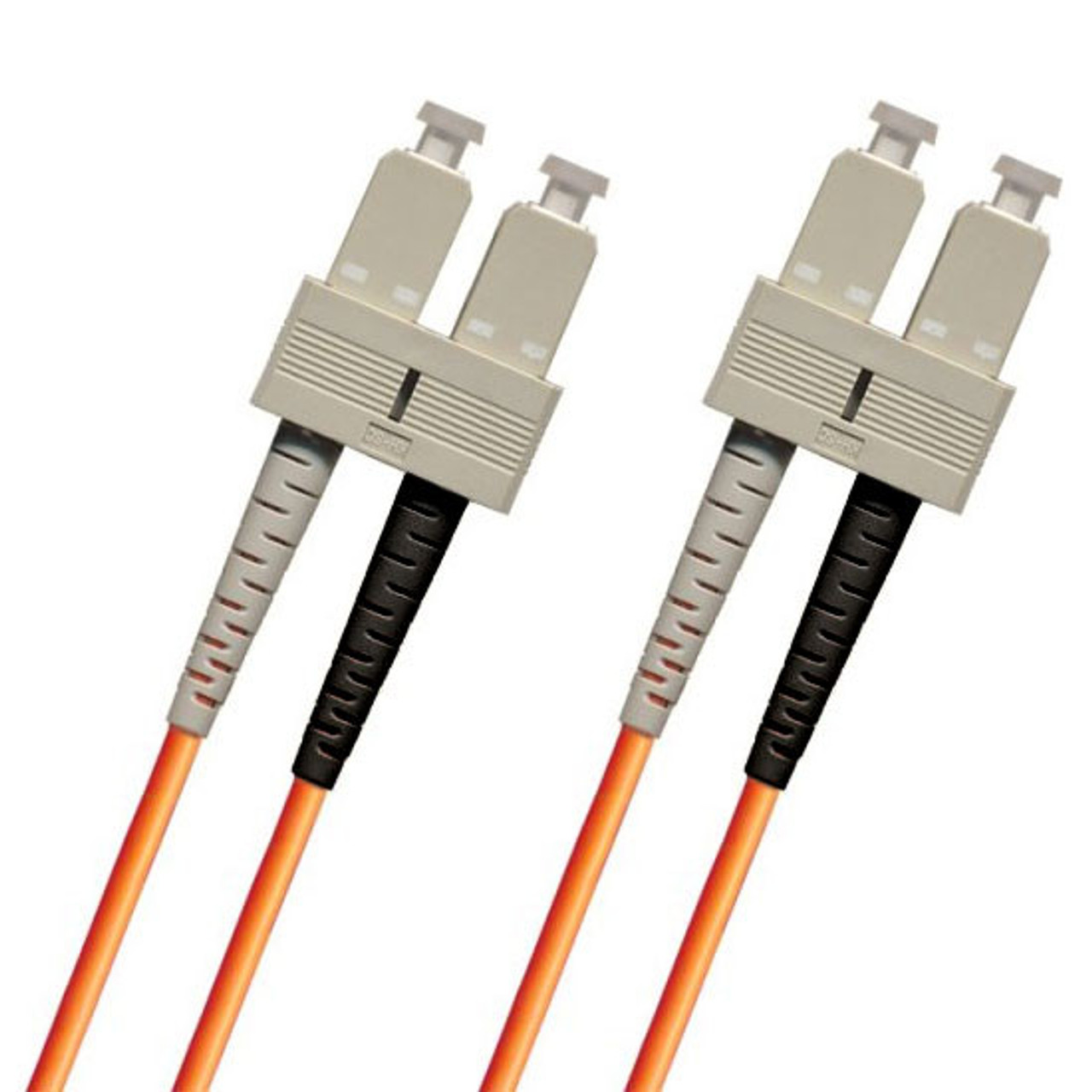
The SC, or subscriber connector, developed in Japan by Nippon Telegraph and Telephone (NTT), was one of the first push-pull connectors that eliminated the need for any screw- or twist-on action, offering easier insertion and removal.
Standardized in 1999, the SC connector’s square push-pull design with a spring-loaded 2.5mm ferrule reduced manufacturing costs and supported higher density over its FC and ST predecessors.
SC connectors are compatible with single and multimode fiber and remain dominant in telecommunications applications, especially FTTX passive optical networks for customer premises. Patch cables featuring two joined SC connectors with different boot colors ensure maximum durability and useability for duplex applications.
LC Connectors
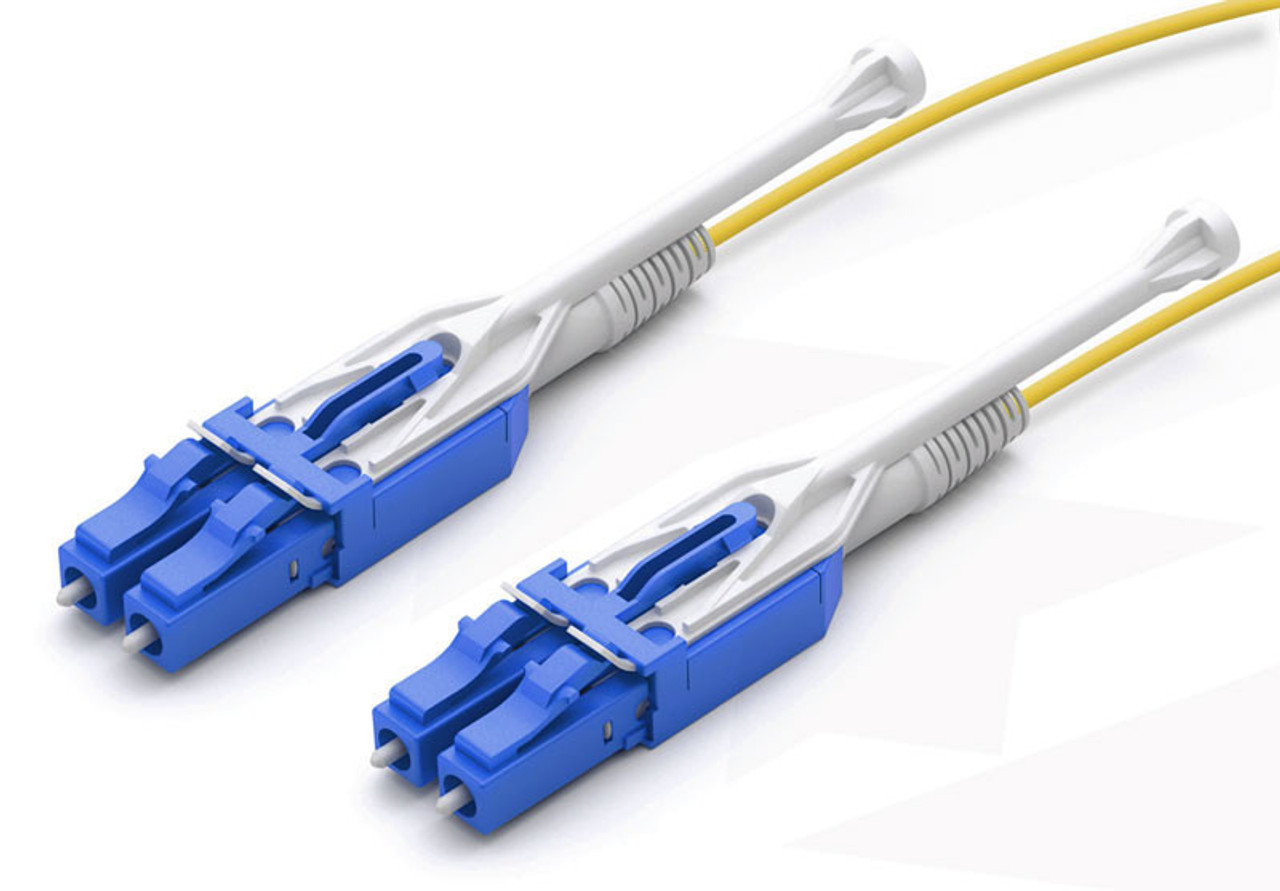
LC connectors were developed by Lucent Technologies and standardized in 2001 as the first small form-factor connector to reduce space requirements as fiber densities increased.
The LC offers excellent insertion loss performance in a 1.25mm ferrule, which is half the size of 2.5mm FC, ST, and SC connectors. Modeled after copper RJ-45 connectors, LC connectors feature a plug latch that makes an audible click when engaged and provides a secure connection.
Because the small size and latch of the LC can be difficult to access in high-density environments, push-pull options are also available. For duplex multimode and single-mode applications, patch cables with LC connectors come in a uniboot design with two fibers in a single cable jacket and push-pull tab for easy insertion and removal in high-density data center and central office patching environments.
Today, the LC is the most common fiber patch cable connector type and the primary optic interface for SFP-based switch transceivers used in duplex fiber applications.
MTRJ Connectors
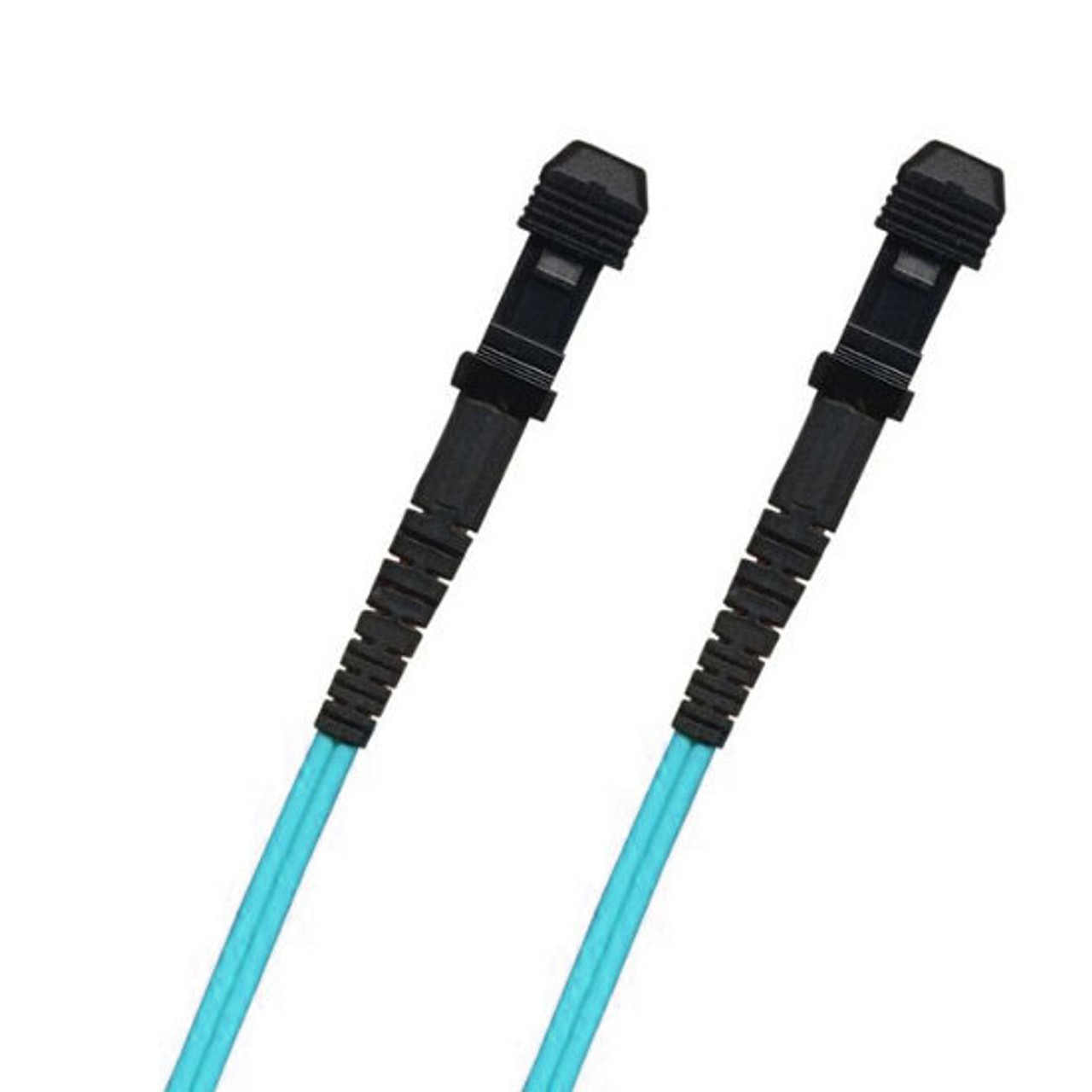
MTRJ connectors invented in 1994 by Amp Netconnect were the first to include transmitting and receiving fibers in a single connector using a mechanical transfer (MT) ferrule design instead of a 2.5mm or 1.25mm ferrule. An MT ferrule holds multiple fibers in a compact square housing, providing precise alignment with guide pins.
While MTRJ connectors are still used in some multimode applications, they have higher insertion loss than LC and SC connectors and are more difficult to field terminate and clean. As a result, MTRJs have not gained significant support from switch, transceiver, and test equipment manufacturers for duplex applications and are not as popular as LC connectors. Due to its MT ferrule duplex design, all MTRJ patch cables are duplex.
MPO Connectors
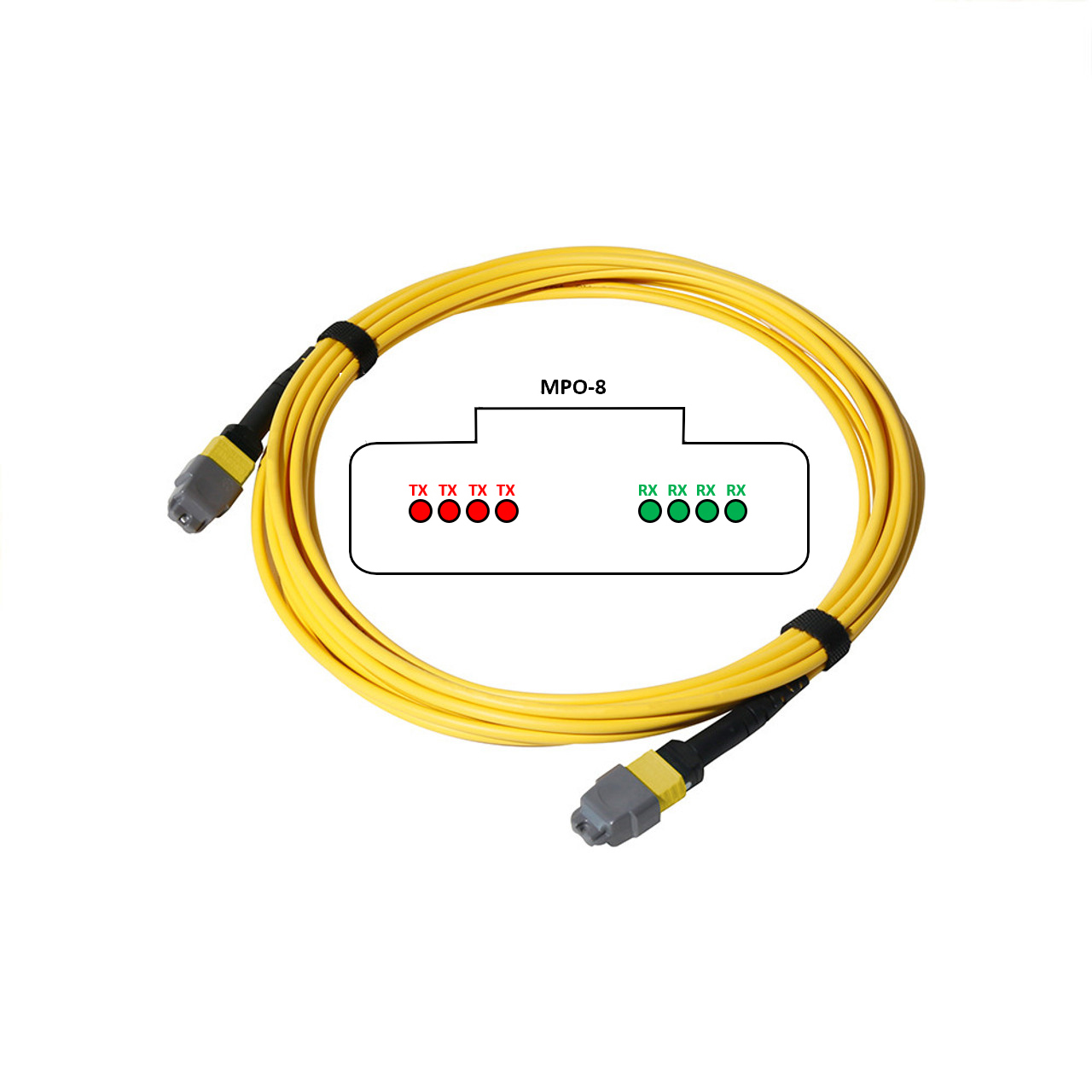
Invented in 1996, multi-fiber push-on (MPO) connectors that use an MT ferrule design are available with 8, 12, 24, 16, 32, 48, and 72 fibers. These multi-fiber connectors were designed initially for high-fiber count cables used in outside plant and data center environments, providing plug-and-play deployments that eliminate the need for costly mass fusion splicing while significantly improving density.
With the advent of parallel optic applications that transmit and receive over multiple fibers to achieve higher data rates, the 8-fiber MPO connector has become the connector of choice for parallel optic 40, 100, 200, and 400 Gig single mode and multimode applications with four fibers transmitting and four receiving at 10, 25, 50, or 100 Gigabits per second (Gb/s). Next-generation 800 Gig applications will initially rely on 16-fiber MPO connectors with eight fibers transmitting and eight receiving at 100 Gb/s but will eventually transition back to 8-fiber MPO connectors when 200 Gb/s signaling becomes available.
MTP connectors are a type of MPO connector developed by US Conec that offers superior fiber end face geometry and mechanics for maximum performance and reliability in high-speed networking (learn more about MTP vs. MPO connectors). Leading connectivity vendors have also developed very small form-factor (VSFF) 16-fiber SN-MT and MMC MPO connectors that offer three times the density of a traditional 16-fiber MPO to support 800 Gig and future 1.5 Terabit applications in less space.
New CS, SN, and MDC Duplex Connectors
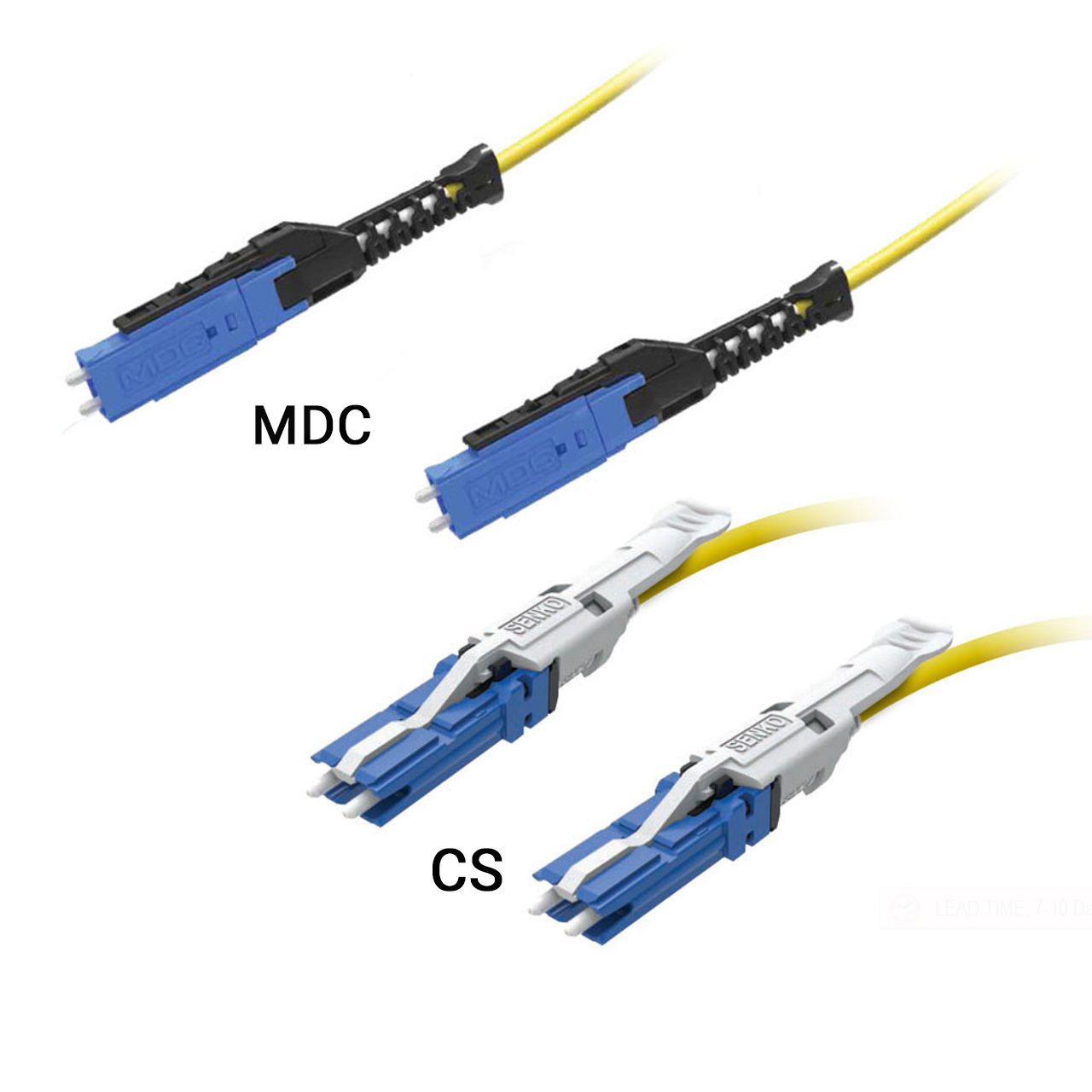
New VSFF duplex connectors provide an even smaller footprint for high-density patching environments. Patch cables with these connectors are ideal for high-speed data center breakout applications where a single 400 or 800 Gigabit switch port supports four or eight 100 Gig server connections.
New VSFF duplex connectors include Senko’s CS connector, which is 40% smaller than LC connectors. Senko also offers the SN connector with vertically positioned fibers, which is 70% smaller than LC connectors. US Conec offers a VSFF MDC duplex connector similar in size to the SN connector.
Choosing the Right Patch Cable Connector
When choosing the right fiber optic patch cable connector, the I/O connector on the active equipment or device dictates which type you need. This often has a lot to do with the application being supported.
For example, duplex fiber applications will require duplex patch cables, passive optical networks typically require simplex patch cables and parallel optics applications require multi-fiber MPO connectors.
Patch cables can also include different connectors on either end to support high-density patching or breakout applications.
For example, a server might connect via a patch cable with a duplex LC connector at the equipment side and a new VSFF duplex CS connector at the other end to achieve maximum density at the patch panel. High-speed breakout applications where a 400 Gig switch port that requires an 8-fiber MPO connects to four 100 Gig servers would require a breakout patch cable with an MPO at one end and four duplex connectors at the other.
The following table provides an overview of the various fiber optic patch cable connector types and their form factor, connection style, applications, and environments.
| Connector Type | Form Factor | Connection Style | FiberType | Application | Typical Environment |
| FC | 2.5mm | Keyed, Screw On | Singlemode, Multimode | Simplex, Duplex | Datacom, Industrial, Laboratories, Broadcasting |
| ST | 2.5mm | Keyed, Twist On | Multimode | Simplex, Duplex | Datacom, Military |
| SC | 2.5mm | Push-Pull | Singlemode, Multimode | Simplex, Duplex | Datacom, Broadcasting, FTTX |
| LC | 1.25mm | Latch or Push-Pull | Singlemode, Multimode | Simplex, Duplex | Datacom, LANs, Central Offices, Data Centers |
| MTRJ | MT | Snap On with Guide Pins | Singlemode, Multimode | Duplex Only | Datacom |
| MPO | MT | Snap On with Guide Pins | Singlemode, Multimode | Multifiber (8, 16, 24, 32, 48, 72) | Datacom, Data Centers, High-Speed Computing |
| SN-MT | MT, VSFF | Push-Pull | Singlemode | Multifiber (16) | Data Centers, High-Speed Computing |
| MMC | MT, VSFF | Push-Pull | Singlemode, Multimode | Multifiber (16) | Data Centers, High-Speed Computing |
| CS | VSFF | Push-Pull | Singlemode, Multimode | Duplex | Data Centers, High-Speed Computing Breakout Applications |
| SN | VSFF | Push-Pull | Singlemode, Multimode | Duplex | Data Centers, High-Speed Computing Breakout Applications |
| MDC | VSFF | Push-Pull | Singlemode, Multimode | Duplex | Data Centers, High-Speed Computing Breakout Applications |
The good news is that CablesPlus USA is always ready to help you choose the right patch cable connector for your application. We offer a vast selection in a wide range of connector types, fiber types, strand counts, lengths, and colors—including TAA-compliant patch cables for federal contracts and other US manufacturing requirements.
See Our Fiber Optic Patch Cables Contact an Expert
Additional Resources:
